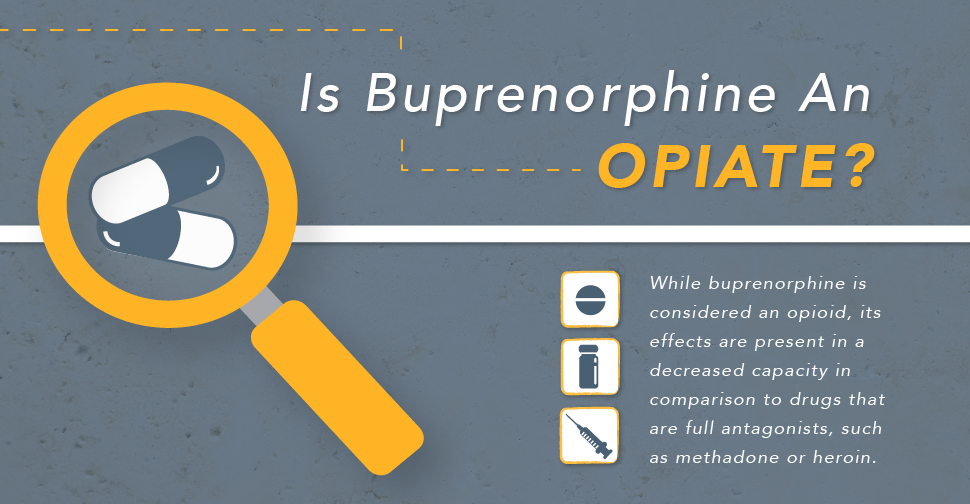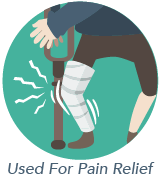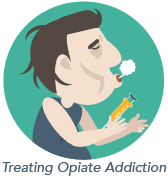
Opiate abuse and dependence is on the rise. It might come as a surprise to know that buprenorphine, a medication that is commonly used to treat opiate dependence, is in fact an opiate itself. Unfortunately, this is the case and it can complicate your recovery. Thankfully, there is hope in using this replacement medicine.
What Is Buprenorphine?
In 2002, the FDA approved buprenorphine, as delivered by Subtex or Suboxone, as a treatment for opiate addiction. Since then, several other preparations of this medicine have been approved. Used most commonly as an alternative to methodone, it is the first drug that is available to treat opioid dependence outside of a clinic setting. According to archived documents from the former National Drug Intelligence Center (NDIC) it is “used to treat addiction to any type of opiate, including oxycodones such as OxyContin and Percocet.”
The NDIC states that “buprenorphine is a derivative of thebaine, an extract of opium. The drug is an opioid (synthetic opiate) partial agonist.” This means that while buprenorphine is an opioid (with the capacity to produce opiate effects such as euphoria and respiratory depression) these effects are present in a decreased capacity in comparison to drugs that are full antagonists, such as methadone or heroin.
How Does Buprenorphine Work?
Buprenorphine is primarily used to treat pain, but its use extends beyond this, as it is also used—and perhaps more widely known—for its use within opiate detoxification and maintenance. Here is what you need to know about its effects:
- As Treatment For Pain Relief: Buprenorphine is used as a medication (narcotic analgesic) to treat pain. This medication binds to the same receptors as other opiates (including prescription painkillers), so it also has similar pain-fighting effects. The preparations of this include: Buprenex, Butrans, and Belbuca.
 For Treatment Of Opiate Addiction: For those that suffer from opiate dependence, this drug is used as a part of medication-assisted treatment (MAT) or therapy to help people taper off opiates. Buprenorphine binds to and occupies the same opioid receptors as the abused drug, creating the same effects. It is for this reason that cravings are reduced. Like any opiate, buprenorphine works on the Central Nervous System, but in this case it causes decreased withdrawal symptoms.
For Treatment Of Opiate Addiction: For those that suffer from opiate dependence, this drug is used as a part of medication-assisted treatment (MAT) or therapy to help people taper off opiates. Buprenorphine binds to and occupies the same opioid receptors as the abused drug, creating the same effects. It is for this reason that cravings are reduced. Like any opiate, buprenorphine works on the Central Nervous System, but in this case it causes decreased withdrawal symptoms.
It also aids in the withdrawal process by negating the euphoric effect if a person takes the illicit drug while using buprenorphine. Typically, buprenorphine is administered in a clinic or doctor’s office by means of an injection. However, there are two types of medications that may be taken at home due to their availability by prescription:
Subutex: This is straight buprenorphine which is most commonly used in the initial stages of treatment, specifically during the withdrawal process.
Combination Of Buprenorphine And Naloxone: Suboxone, Zubsolv, and Bunavail combine buprenorphine with another medication called naloxone which is an opioid antagonist. The naloxone is a preventive measure added to prevent people from abusing buprenorphine by means of crushing and snorting or injecting it; if someone does either of these things they will experience acute withdrawal symptoms. This medication is used during the maintenance stages of treatment.
The Risks and Side-Effects Of Buprenorphine
Buprenorphine is metabolized by the liver and for this reason your doctor may suggest routine blood work to monitor your liver functions. If you take pain medications, such as morphine or codeine, the buprenorphine will block their effects. And while the risk of overdose is fairly low, a risk still exists. This is especially true if more is taken than necessary.
Unfortunately, buprenorphine can cause respiratory depression if used improperly. This risk increases if taked in conjunction with the following: alcohol, antidepressants, benzodiazepines, sedatives, or tranquilizers. It can cause nausea, dizziness or lightheadedness, and may cause fainting.
However, many of these side effects are present primarily if buprenorphine is misused or taken in high amounts. And thankfully, of you stick to the dosage prescribed by your doctor, your risk of experiencing these side effects decreases greatly.
Can Buprenorphine Be Addictive?
Yes, though it’s nowhere near as addictive as methadone and other opiates. Drugs.com says that “Buprenorphine is a narcotic analgesic similar to morphine, and has the potential for being abused and misused.” Being that buprenorphine is an opioid and does cause euphoria, some people may use this drug in a manner other then prescribed and develope a dependency.
Thankfully, buprenorphine is easier to manage than other opiate replacement therapies. And it can be easily tapered off than methadone, making it easier to slowly decrease dependency.
Find Out The Truth About Your Drug Use Today
 If you or someone you love could benefit from this drug — or if they suffer from an addiction —please be proactive and get help today. At Drugrehab.org, we can help you find a treatment center near you that offers buprenorphine treatment. Contact us today to learn more.
If you or someone you love could benefit from this drug — or if they suffer from an addiction —please be proactive and get help today. At Drugrehab.org, we can help you find a treatment center near you that offers buprenorphine treatment. Contact us today to learn more.

